Lamp’s fourth album, Lamp Gensou, was released in late 2008. The band conducted a Tower Records exclusive interview in commemoration of its release, also publishing “liner notes” where all three members wrote about their thoughts on each song on the album.
Here are English translations of both the interview and the song-by-song commentary.
Original text: Masaru Yokota (interview), Lamp (liner notes)
English translation: Henkka
Lamp online: website, label, blog, Facebook, Twitter, Spotify, YouTube, SoundCloud, Instagram
You can buy Lamp’s music directly from the band, both physically and digitally, on Bandcamp.
— This is your first original album in three and a half years and I’m sure your fans have been waiting for it eagerly. How do you feel about the album now that it’s finished?
Taiyo Someya: Right. Well, let’s just say that if we got into a car accident or something and died right after this album was released, in effect making this our final album… I think I would be left with so much regret in the afterlife. If I’m going to die in the near future, I hope we at least get to release one more album before that happens. (laughs)
Kaori Sakakibara: That’s awful! (laughs)
— (laughs) Well, originally you were talking about releasing your 4th and 5th albums simultaneously.
Someya: Yes. We already have a good number of songs ready to be recorded. This is a bit off-topic, but with Lamp, it feels like we’re constantly encouraging ourselves to keep going forward by sort of putting off doing what we really want to do. It’s like we’re raising our expectations of ourselves.
Sakakibara: Yeah, we’re like, “maybe we should leave this song off this record and put it on the next one because it’s so good.” … Okay, that’s a pretty terrible thing to say as well. (laughs) But even with this album we tried recording this one song we’ve had since forever — a song called “Kimi no Sumu Machi Made” — but our way of playing had changed so much that it just didn’t fit the song at all anymore.
Yusuke Nagai: We couldn’t write songs similar to the ones we used to write even if we tried to. There’s a certain atmosphere about them that we could only produce back then, and when we play songs we wrote ages ago, it doesn’t feel like “us” at all.
— Speaking of your past, I’d like to ask you to look back on your releases up until now and give us your opinions on them now, in hindsight. First off, how do you feel about Soyokaze Apartment 201?
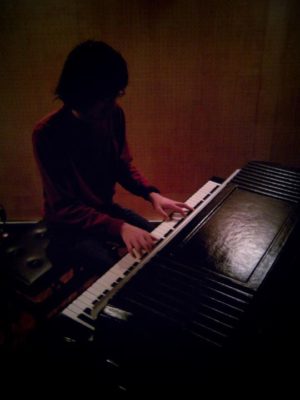 Someya: Our first album is just… it doesn’t sound like us at all anymore. I do think the first three songs are good and we still play those live. Those are still fun to perform.
Someya: Our first album is just… it doesn’t sound like us at all anymore. I do think the first three songs are good and we still play those live. Those are still fun to perform.
Sakakibara: This sort of touches on what I just said, but we wouldn’t be able to write songs like those on our first album anymore, so I think it’s good that we released an album like that, too.
Nagai: There are many bands whose first album is generally considered their best, right? But with us… I really hope no one thinks that of our first album. (laughs)
Everyone: (laughs)
— Next up: Koibito e.
Someya: I still remember the recordings for this album well. It’s a very memorable album for us. After releasing our first album, we were sort of pressuring ourselves by asking “okay, so what is it that we actually want to do with the second record?” because we all had our individual ideas for it. This album was the result of that. Looking back, I think we made this album at a time when Lamp most felt like a proper “band.”
Nagai: I think we didn’t really succeed in making the first album quite the way we’d wanted it, and because of that, we spent a lot of time thinking about what and how we wanted to perform on the next one. I think we felt really conscious about wanting to make something special with our second album.
Sakakibara: We no longer do this, but at the time of our second album we were still conscious about what other bands around us were doing, so we did think about what we wanted to do in response to those other groups.
— Interesting. How about your third album, Komorebidoori ni te? The last time we spoke, you described it as feeling like a compilation album.
Sakakibara: While I’m aware that it’s been three and a half years since that album, it doesn’t feel like all that much has actually changed.
Someya: Music-wise, though, while it doesn’t feel like much has changed, with that album we really just tried to pull out all the stops. We felt very self-conscious about it being our third album and we made it with the mindset of, “dammit, if this doesn’t get accepted by the listeners, than what will?!”
Nagai: We were working so hard around that time. Looking back, it really feels like we were so young up to and including our third album. The recordings for this album? The youth was at zero percent. (laughs) To put it another way, we were no longer straining ourselves making this album.
Sakakibara: Right. The songs and arrangements are all over the place on our third album. I can’t say which of them is better, but this new album feels more reserved and thought-out. With the third album, your ears kind of start to hurt if you keep listening to it for a long time.
— So, in a way, your third album could be thought of as a short story whereas Lamp Gensou should be called more like a full-length novel. In that sense I think it might be a bit similar to your second album.
Someya: Yeah, we originally wanted to make something like that when we started work on it. Whether we actually succeeded or not, though, is too early for me to tell at this point. Also, with our second album, we wanted to show everything we could do, our full repertoire of tricks, but with this album we wanted it to sound like one concentrated, whole work.
— While perhaps not quite like the difference between an oil painting and a water painting, this album does feel very simple and like something completely different from your first three albums. In a previous interview you said that you didn’t feel like you could write “simple music” that could be anything very worthwhile. Have you grown more confident in your songwriting abilities since then?
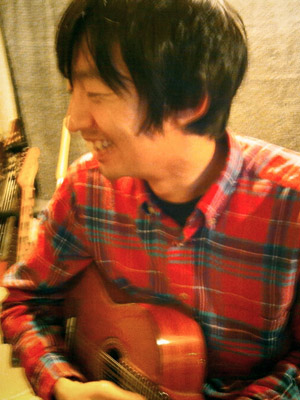 Someya: We like to change; to make progress. We did everything we could with our third album and we wanted to make our next album even better. So one idea I had was, why don’t we make our next album really simple? … But there’s so much music out there that’s both simple and cool, and this album didn’t become quite like that. And that’s why I just can’t imagine this being considered our best album of all time… (laughs)
Someya: We like to change; to make progress. We did everything we could with our third album and we wanted to make our next album even better. So one idea I had was, why don’t we make our next album really simple? … But there’s so much music out there that’s both simple and cool, and this album didn’t become quite like that. And that’s why I just can’t imagine this being considered our best album of all time… (laughs)
— Ah, so that’s why earlier you were saying you couldn’t die yet. (laughs) However, I listened to all your albums from the first one in preparation for this one, and I noticed so much growth! Especially Sakakibara’s vocals on this album sounded so much more expressive, I felt.
Someya: On Lamp Gensou, there’s not much blocking the vocals in way of instrumentation, so the vocals may sound rather raw. This could be a very pleasant album for people who like that sort of thing.
Sakakibara: Yeah, I definitely think the vocals on this album are easier to hear than those on the third album. The two albums were recorded under different environments, too. Our thinking in regards to recording has changed even since Zankou. Previously we used to record in this tatami-mat room (Editor’s note: Lamp first three albums were recorded in an old, private home that was remodeled into a recording studio) and that was close to our ideal at the time, but then we started to think more about how to best capture the vocals, and with this album it feels like we achieved that. We feel satisfied. However, the songs on this album aren’t really the type of music that would feel exceptionally good to sing live. On the album it all sounds great, but if we were to play these songs live, it’d be difficult for both us as well as the listeners. (laughs)
— (laughs) So it could be said that while they’re simple vocals on top of simple music, the melodies are anything but.
Someya: We weren’t conscious of that when making the album though. The thing with composing music for me is, when I write something and it sounds really melodious, I first try to kind of fight it, you know? That’s what usually happens. I’m always like, “this is no good.” But then when we start to approach a backing track that sounds good, that’s when I begin to think “okay, maybe there’s something to this track after all.” Also, this time around we wanted to make an album you’d feel like listening to over and over again, so we tried not to make it too melodious on purpose because that can get tiring. Like Sakakibara just mentioned about the live thing, it really is an album where the listeners are going to have to make an effort to get into it.
— You also wrote on your blog about how you wish listeners will not judge it based solely on a quick trial listen, but would take the time to listen to it at home as well.
Someya: I don’t think you’ll find many people who are going to think it’s an amazing album after a single listen. If possible, I wish listeners could give it several plays through to understand what’s good about it. Also… personally, I would like to tell people about how multifaceted music is. It’s my hope that, through us, people could learn about the greatness of music — not just individual parts of it, but the all-encompassing richness of music in general. I do have that sort of ulterior motive myself.
— I see. On the other hand, you also wrote how the album is a work you “made in the present while also keeping in mind our sentiments towards the past — the Japan of days past.” In other words, you were consciously making sure the album has the right amounts of both accessibility as well as traditionality. I also felt like the lyrics have changed some since your previous works.
Someya: Right, well, I’d say we’ve been quite conscious about our lyrics ever since our first album, and on this album we did want to make that Japaneseness more pronounced. But, in saying that, it’s not like there’s an overuse of it, or that we put emphasis on the lyrics over the music, or that we were trying to make that the highlight of the album either.
— Perhaps that ties into what you’ve talked about before: the art of expressing something without actually saying it.
Someya: Yeah. The thing is, we’re not looking to do anything “pushy” with our music. Well, I’m not sure if this actually ties into what you just mentioned, the “expressing something without saying it” thing, but our music isn’t very showy; it’s not the type of music you listen to and just instantly “get.” When new listeners find us, they have to really dig in and figure out what we’re all about — or that’s what I hope they do anyhow — and we’ve made it a point to specifically not respond to what any other bands are doing.
Nagai: I’m again not sure if this is related, but with us, I think especially when we’re recording we tend to shut ourselves out from the outside entirely. We don’t want to be influenced by anything, or get weirdly professional in any way. We’ve continued making music in this tiny circle of ours and we take care to protect our amateurism, both consciously and unconsciously. I think that’s something about us that’s never going to change. It’s a really important part of Lamp.
Someya: For me, when I’m listening to music I enjoy and taking in its greatness, the passion it instills in me makes me believe that if only we can just reach something that’s on the same level as that, we’re going to come up with something good. Rather than listening to current bands and being influenced by what everyone’s doing right now, I just listen to the same music I always listen to and try to respond to that. And yes, I realize what I’m saying now is a complete contradiction to what we were saying two seconds ago. (laughs)
— It really feels to me like Lamp is creating music in this really happy environment, and what’s more, there are people who crave Lamp’s music — and you’re willing to deliver.
Someya: With this album, though, I’m not confident that all of it is going to satisfy our listeners. Some other parts, on the other hand, should. And as for the bit about our music-creating environment… I think we’re quite consistently giving music our all and trying out everything we want to do — which is getting harder by the year. (laughs) I mean, none of us is getting any younger, right? I really feel we have to create as much music as possible while we’re alive; while we’re still young.
Sakakibara: In that sense, though, taking three and a half years to release this album after the previous one was way too long. (laughs)
Someya: It was insanely long! (laughs) I never want to take this long between albums again, and I want to make sure we put out our next one before I turn 30.
— Ooh, I’m looking forward to that! Thank you very much to all of you in Lamp! … Is what I was going to say, but before we end the interview, I’d like to take this opportunity to get to know the members of Lamp a bit more personally. Whenever I interview you, I can’t help but notice how interesting the relationships between you three are. So, in order for your listeners to get an idea of those relationships as well, I’d like to ask you to take turns introducing each other. First, could you just go ahead and introduce Nagai to us, Sakakibara?
Everyone: Huuuh?! (laughs)
Sakakibara: I feel like Nagai really matured a lot with this 4th album (or during the making of it). He used to be much more difficult. Well, let’s be honest: he still is. (laughs) But it’s like, when Nagai’s around, everyone has fun. He seems so average, but he actually has so many habits that are characteristic to him — in a good way. I’m a very susceptible kind of person, so I find that those traits about him have really influenced me. Comparing my current self to myself when I was 20 (Lamp’s three members had already found each other at this point), I feel like I’ve really gotten a lot better, mental health-wise. Like, I used to be into some really twisted stuff, and young people in general can be really roundabout and indirect personality-wise. And I think Nagai finds acting that way really uncool, so that led me to look more closely at myself when it comes to that stuff, too. That’s why I’d say Nagai had a big influence as to how I am as a person today. Mmm… the more I talk about this, the more I feel like I’m not able to express it the way I want to…
Nagai: … Could we just skip this part of the interview? (laughs) It’s like, if any average person heard the kind of conversations the three of us have normally, I think they’d be really put off by us, like “what is wrong with this band?!”
Sakakibara: Yeah, I get that because I, too, was first an outsider. You two were already friends by the time I met you. At first I was just… shocked. I was like, “why are these two laughing when no one has said anything funny at all?!” (laughs)
Nagai: Yeah, but part of that was because I was very influenced by Someya. He made me that way. (laughs)
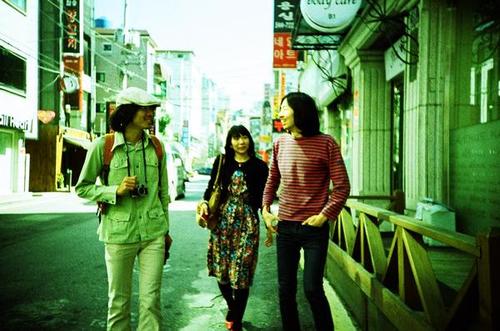
— Next, could we have Nagai introduce Someya?
Nagai: It’s not like we ever promised each other we’d stick together… but that’s the way it seems to have worked out. (laughs) He’s influenced me musically in many ways, and there are so many things I respect about him, but even beyond all that, we just have this connection which I think is what has allowed us to go on for all this time. I think about that every now and then, like, “how did I end up being stuck with Someya?” (laughs) It’s not like we were super good friends to begin with, but then again, I have a stronger connection with him than I do with any of my normal friends. If I had to describe our relationship in one word, I’d call us “inseparable.” Also, if it wasn’t for Someya, I probably would’ve never continued on making music for as long as I have. Someya is like our leader. He’s very dependable, and also very opinionated, and that in turn makes us depend on him, too. Well, in short, he’s the driving force behind Lamp. If it wasn’t for Someya, Lamp wouldn’t exist.
— Finally: Someya, could you tell us about Sakakibara?
Someya: Nagai hinted at this, too, but I’m someone who will often make decisions and go forward with things without consulting others first. At times like that, Kaori can be a voice of reason, giving me advice that makes me calm down, making sure I don’t act too rashly. Compared to Nagai, I met Kaori much later, and I guess with her being a woman and all I do feel some degree of separation with her. I suppose if it was just me and Nagai our music might be a bit too one-sided, but with the girly poppiness she adds, I think that makes our music a little bit more bearable to our fans. (laughs) Mentally, she’s kind of like Nagai in the sense that they’re very pessimistic. Say we have a live show coming up for example, she’ll be constantly complaining about it as it approaches. (laughs) For a more real life example, if she’s doing some apartment renovating for instance, she’ll be worrying about stuff all the way through, about stuff that to me seems completely arbitrary. But on the plus side, I’m sure her attention to detail comes out in Lamp’s music as well. You know, we barely ever talk about this kind of thing amongst ourselves, so this was actually kind of fun.
Liner Notes
 1. “Hakanaki Haru no Hitomaku”
1. “Hakanaki Haru no Hitomaku”
Nagai: It’s by no means an “easy to get” song, but we nevertheless put it as the first track on the album. The song has no repetition, and there are some very original chord progressions and melodies in there as well. You can tell Someya feels proud of this one as its composer.
Sakakibara: It’s such a strange song. No melody is repeated twice — it feels like the scenery in front of you is constantly changing. It’s almost an excessively delicate beginning to this collection of Lamp’s songs.
Someya: This song came about with me wanting to write a song that sounded like something that came out of Minas, Brazil — only wrapped up in a Japanese atmosphere. I’d been wanting to try writing a pop song with no repetition for a while now, and this song finally gave me the opportunity to do so. The lyrics are based on beautiful memories of days past.
2. “Hisoyaka ni”
Nagai: My concept when writing this one was to compose a song that you’d only need one guitar to portray its whole beauty with. I think it came out pretty good, actually. The string arrangement was very difficult though.
Sakakibara: It begins with a nostalgic-sounding string quartet and is followed by some finger-picked guitar, sounds of a piano, and above all, that vocal that sounds so alive, like he’s singing right next to you. The simple arrangement helps the song deliver its beauty to the listener with ease.
Someya: My favorite song on the whole album. The sound and instrumentation is simple, but the level of perfection of the chord progressions and melodies is incredibly high and very Nagai-like. I don’t think there’s anyone else out there who could write a song like this. This is the kind of sound I wanted the entire album to have as we were making it, yet it feels like this song is actually closest to that ideal. Also, not only is Nagai’s guitar and piano playing great, his arrangement is fantastic as well. Yeah, I like this one.
3. “Yuugure”
Nagai: This song was a very difficult one to bring to completion. What you can hear on this song was my idea of “rock” — even though I’m not sure anyone else is going to find anything rocking about it.
Sakakibara: I love the transition between the second and third tracks. The way the song reaches that climax near the end is very Nagai-like, too. I respect him for being able to write such a personal song.
Someya: Out of all the songs on this album, this one was the one we had the most difficulty recording. Like with the second song, “Hisoyaka ni,” it’s an extremely beautiful song — from the start, Nagai was saying that he wanted these two songs to be connected. It might be difficult to hear because it’s kind of buried behind all the other instruments, but the chorus work in the latter half of the song is very beautiful as well. I remember feeling moved hearing it in the studio.
4. “Ame Furu Yoru no Mukou”
Nagai: We’d played this song live a number of times before, so it was already quite complete by the time we recorded it. The contrast between the difficult-to-understand verse and the very pop, easy-to-understand chorus is interesting.
Sakakibara: The great thing about this song is how the chorus bit I sing is very catchy whereas the parts sung by Nagai are actually very complex, and yet, it’s so easy to listen to. I feel proud of this one.
Someya: After releasing our third album, Komorebidoori ni te, this song along with “Mood Romantica” were the very first songs I wrote. It’s a song I really had to work on, making several revisions to it all the time, so I have a deeply personal connection to this one. I’m very happy with how it turned out, and I love the imagery of the lyrics.
5. “Yumeutsutsu”
Nagai: I think this is one of those songs that some people are going to absolutely love, and others are going to absolutely hate. People who don’t care about this kind of thing are going to think it’s overly simple, whereas people who do appreciate the style might find something great about it.
Sakakibara: It’s split into two parts, with the latter half being very Indian music-inspired for some reason. We wanted to create a very dreamy atmosphere. It’s a very hard song to grasp — in a good way — and I’m glad we were able to have it on the album.
Someya: I wanted to capture a rainy landscape in a folky sound with this one. What I wanted to do was portray that strange sort of mellowness you can feel on a rainy day, but at this point I don’t even know myself if I succeeded in actually doing so. This is the first time all three of us took part in finishing a single composition.
6. “Hakuchuumu”
Nagai: Probably the catchiest song on the album. It might be far removed from what people have come to expect from Lamp, but we like this kind of stuff, too. It makes me think that our playing might’ve gotten just a little bit better, too.
Sakakibara: This song feels very symbolic of the entire album. Sure, listening to it objectively, some people might be shocked to hear this kind of a song coming from us, but I didn’t feel like we were being especially uncanny or anything. It feels like a very natural progression for Lamp.
Someya: A song about a man who’s gone mad on a calm, sunny day — and it’s about myself. And it feels like a very personal song, too. I guess that’s the maddest thing of all.
7. “Nippon Shounen no Natsu”
Nagai: It feels like this song ended up sounding almost the way we imagined it, from the lyrics to the playing. Of course, no song can be 100% exactly the way you imagine it, but I think it’s important you at least strive towards that — it hardly ever leads to a good song when you compromise. Well, that’s how I see it anyway.
Sakakibara: It’s song that sort of drifts between dream and reality. I’ll be happy if that comes across to the listener as well. Although it might strike you as a very simple song as a whole there’s actually lots of little things to note, such as the chorus vocals and the delicate arrangement.
Someya: Those distant, childhood memories I have of the summer, they now seem to me like nothing less than bliss; that warmth a fleeting illusion. Recording this song actually took us two summers — it now feels somehow strange looking back on last year’s summer.
8. “Hatachi no Koi”
Nagai: This one’s a pretty old song — one of the ones we made when the band was first formed. The arrangement didn’t change much from how it was originally, apart from the addition of strings and marimba and such, stuff we’re only able to do now. I quite like it.
Sakakibara: This is a song we really were singing when we were 20, so it brings back memories for us in the band. I remember feeling pretty impressed when Taiyo suddenly told us “I came up with a song based on the Hyakunin Isshu!”
Someya: This is a song I wrote seven years ago and it’s one that feels very close to me. The lyrics were influenced by the 5-7-5-7-7 form of Tanka poems. It feels like I managed to create something new by combining bossa nova and that Japanese feeling. It’s about someone not realizing the impermanence of youth; the beauty of a love one you can never experience twice. We took great care in trying to achieve just the right atmosphere on this song.
9. “Fuyu no Kage wa Kanashimi”
Nagai: According to Someya, this is his favorite of the songs he composed for this album. Although I have to say, this song would’ve turned out better if I was just a little bit better of a singer. The lyrics dealing with a time you can’t go back to are just heartrending.
Sakakibara: This is another pretty old song and it has lyrics that are quite straightforward — something uncommon with Lamp. I think there’s something charming and cute about how a song like this was written by Taiyo and sung by Nagai.
Someya: I wrote this song during the production of our third album, Komorebidoori ni te. I remember singing and playing this song to myself after I’d written it, and just crying every time. So I have an emotional attachment to this one. I’ve really liked this song ever since I wrote it. With the lyrics about a lover who leaves your side, it’s just a very lonely, sad song.
10. “End of a Holiday”
Nagai: This was originally supposed to be a song without vocals, but then Someya warned me that listeners would be disappointed if a song like this was an instrumental, so I hurriedly wrote some lyrics and put vocals on it. This was the first time I used a 12-string electric guitar on record.
Sakakibara: The ambiance of this song sounds like something new for Lamp. While it was supposed to be an instrumental, Taiyo was really, really adamant about it having vocals, so it ended up being a duet with me and Nagai. The ukulule, steel guitar and organ make it sound so light and pleasant.
Someya: I remember telling Nagai how much I loved the song the day I first heard it. When recording it, I did my best in helping bring out the feel of the song like it was on that day he first played it for me. All three of Nagai’s songs on this album are very elaborate — I can only imagine how difficult they must’ve been to write.
11. “A Summer Vacation”
Nagai: It’s a simple performance, with basically just Someya on guitar and me on piano, but there’s also a very effective synthesizer part played by Jun Suzuki. It feels like a fitting song to end the album with.
Sakakibara: This song is one of four songs on the album with no drums, and they’re all very different, rich compositions. There’s the multi-layered chorus vocals and a moog synthesizer that just floats along… To me, it has an image of being the final, sorrowful tiny flower that adorns the album — and then we must part.
Someya: I felt like the album was still lacking something, and this was the final song added to it. A song about the loneliness of summer’s end. For the basic track, my guitar and Nagai’s piano were recorded simultaneously.
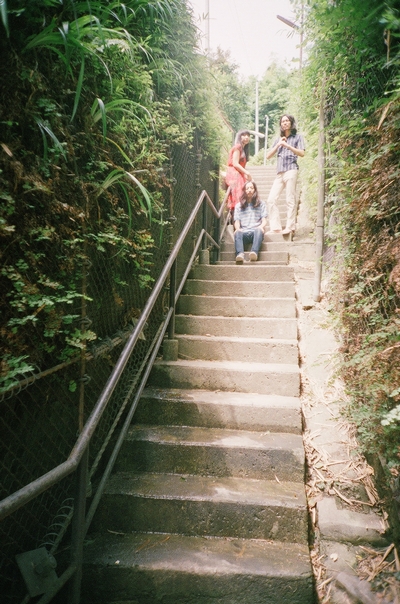
Overall Impressions
Sakakibara: I personally love Lamp Gensou. It was a long process making this album, so as you can imagine, all kinds of happenings took place during its production. We really took our time making this one, adding sounds little by little, and it feels like a parts of ourselves were captured in it. Because of that, there’s always a certain tightness in my chest whenever I listen to the album… Well, I guess the same thing happens with all your favorite music, right? I would be happy if this album became something important for someone somewhere out there. But us Lamp are not yet satisfied. There’s still so much more we want to do, so we’re all looking forward to making our next work. I always feel that way when we finish making an album. I just feel so happy somehow.
Nagai: It’s been three and a half years since our last album, Komorebidoori ni te, but now we’re finally able to release our next one. Even just the recording of this album took us over a year and most of the parts on it were played by us three members, so even amongst all our past releases, this might’ve become Lamp’s most’s personal work yet. Recording a countless number of overlapping chorus vocal tracks, carrying a real Leslie speaker into the studio to play an organ through it, going through the trouble of recording at a faraway studio just because they had vibraphones… so many memories related to the making of this album. It’s a simple album, but it’s an album where we thought through every single detail, so I would be happy if you gave it several listens to discover the good in it. To put it another way, it’s kind of an album that would be pointless for you to check out if you weren’t willing to give it a number of listens. Well, maybe that’s an exaggeration.
Someya: Two things make this album special: that we made it completely without any sort of deadlines, and that every single instrument on it was played live with real instruments. That’s also why the making of it ended up taking longer than we anticipated. It’d be tough to call the music recording industry of today “blessed” in any way, but what we’ve put out on this album is pretty much as far away as you can get from most music released today. As a result, I do believe it to be an album with some rather special sounds to it. It had been a long-time dream of mine to release an album like this while I was still young, and while it was by no means easy, the album finally did take form. Now, having made this album, I believe that our next work is going to have something very different about it that makes it great. Going forward, that’s the sort of feeling of expectation we now have for ourselves.
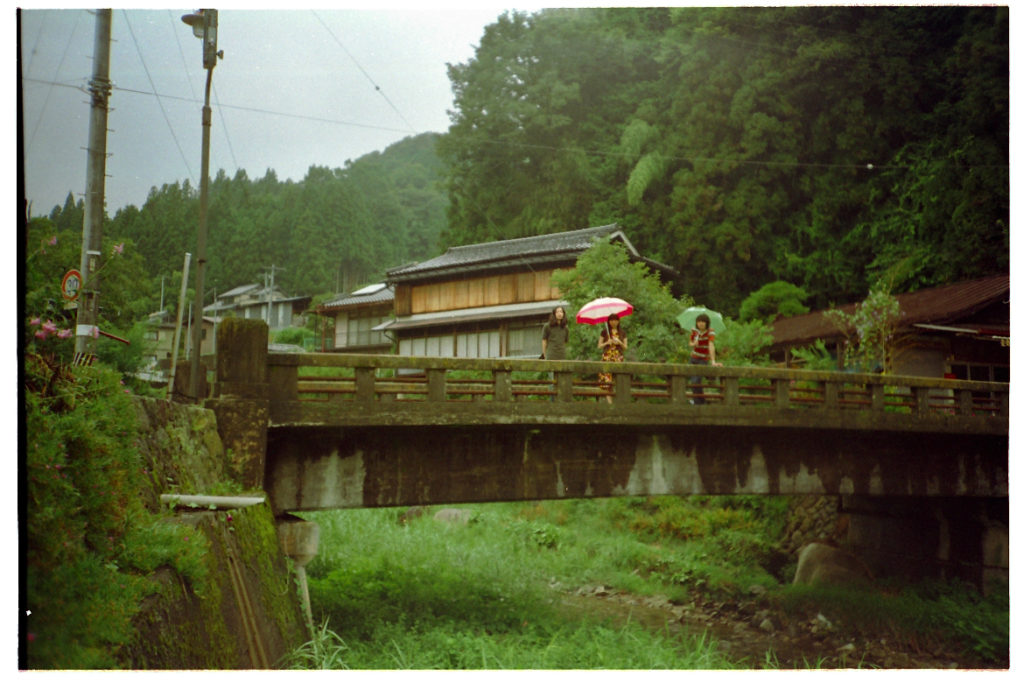
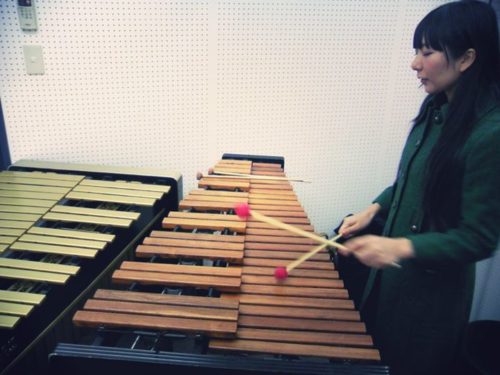

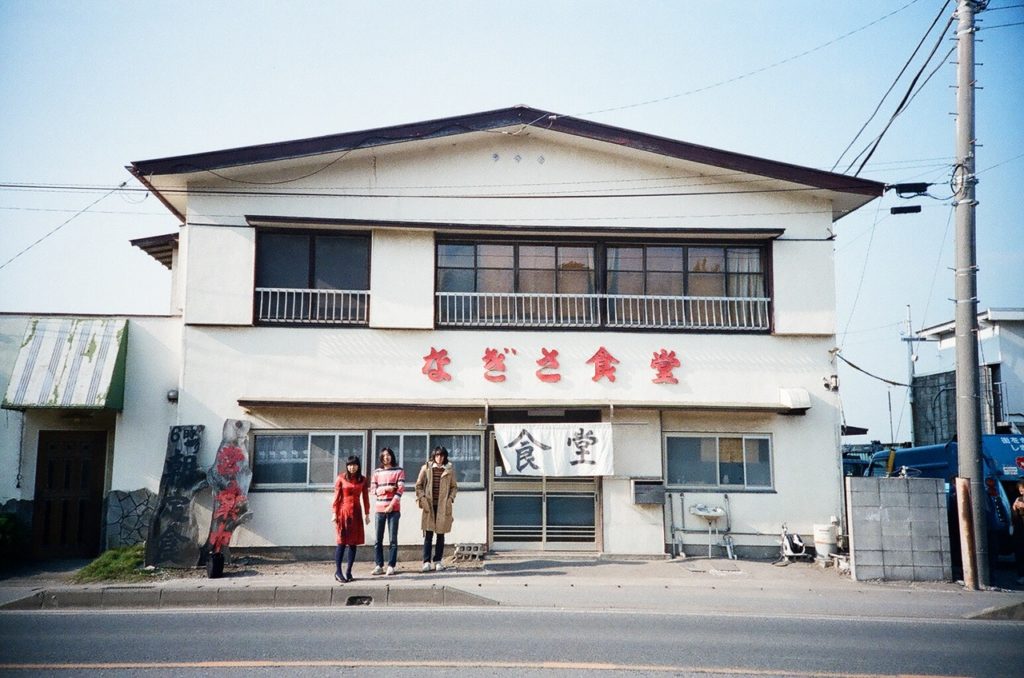

The interview was fun to read! I hope you guys continue to make music!